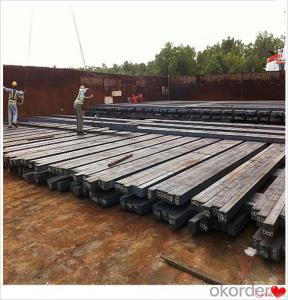Steel Billet steel Billet for Sale 3SP 5SP 20MnSi for Fireplace Steel
- Loading Port:
- Dalian
- Payment Terms:
- TT OR LC
- Min Order Qty:
- 100 m.t.
- Supply Capability:
- 50000 m.t./month
OKorder Service Pledge
OKorder Financial Service
You Might Also Like
Steel Billet steel Billet for Sale 3SP 5SP 20MnSi for Fireplace Steel
Description
Reference Price:$260/ton Mn 0.3%-0.6%
Rectangular billet continuous casting billet and mainly general carbon steel, low carbon low silicon cold-rolled material, high quality carbon structural steel, high strength low alloy steel, special steel, etc.
The billet is mainly divided into two kinds from the shape:
Slab: cross section width and height of the ratio of the larger, mainly used for rolling plate.
Billet: equal cross section width and height, or a huge difference, mainly used for rolling steel, wire rod. ,
Steel billets have distinct characteristics as compared with already furnished steel bars and products. Billets have a specific grain structure, which enables the metal to be processed more intricately. Steel billets are also known for their malleability and ductility, especially when exposed to varying temperatures during shaping and molding.
Processing of Steel Billet
Steel billets are considered fresh and raw, and they must undergo a series of manufacturing processes before they can be used for various purposes. Billets are made by means of freezing molten liquid, and are later exposed to extremely low temperatures in order to allow the metal to take shape and solidify in chemical structure. The temperature manipulates the metal's physical properties, and tones its strength and durability. The subsequent processes provide the metal's curved mold design so that it can fit the allotted space provided by other machines, which complete the finishing procedures.
Images
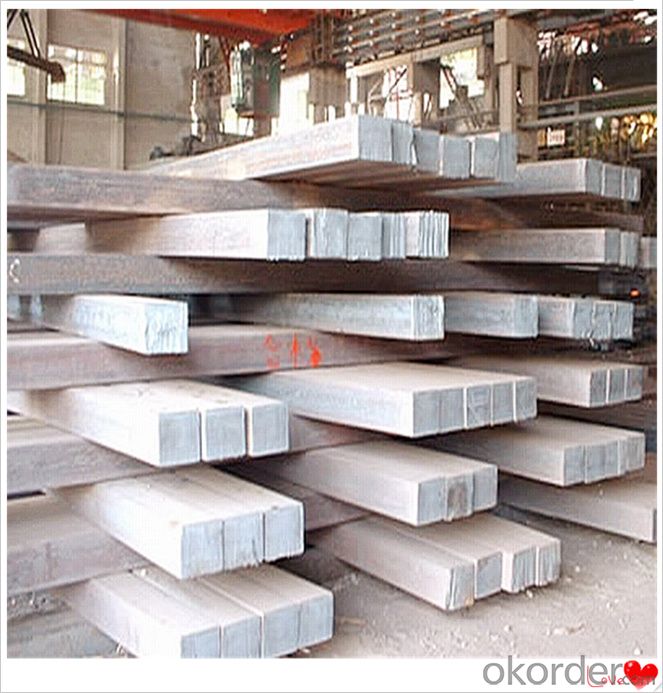
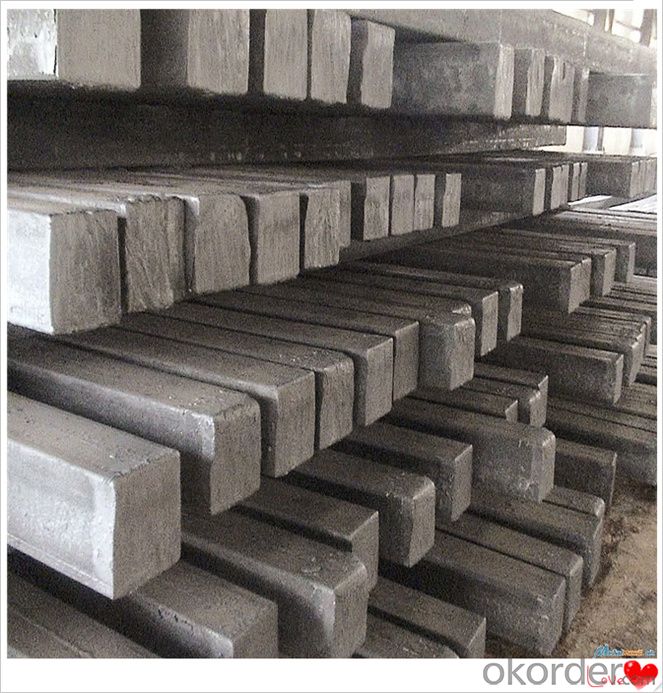
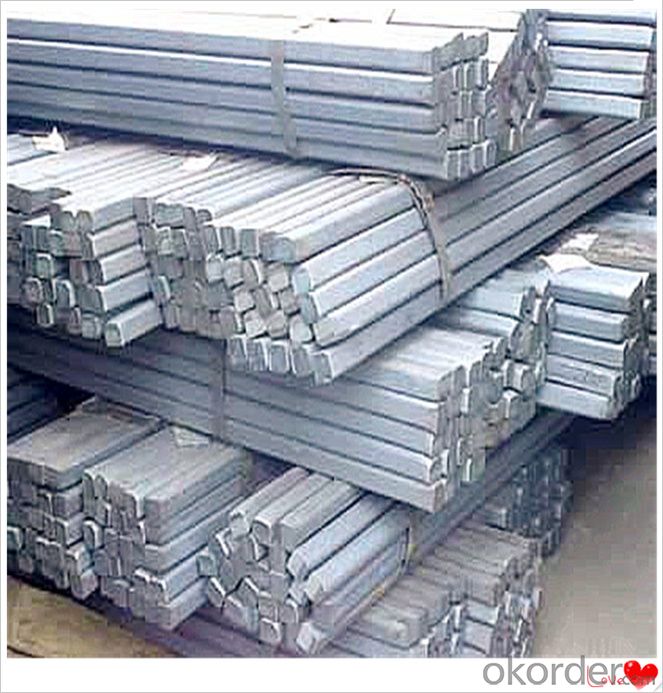
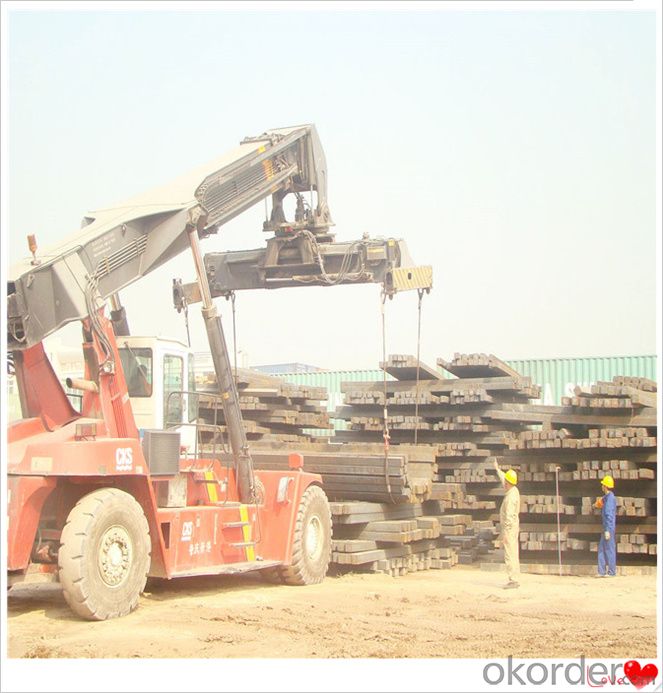
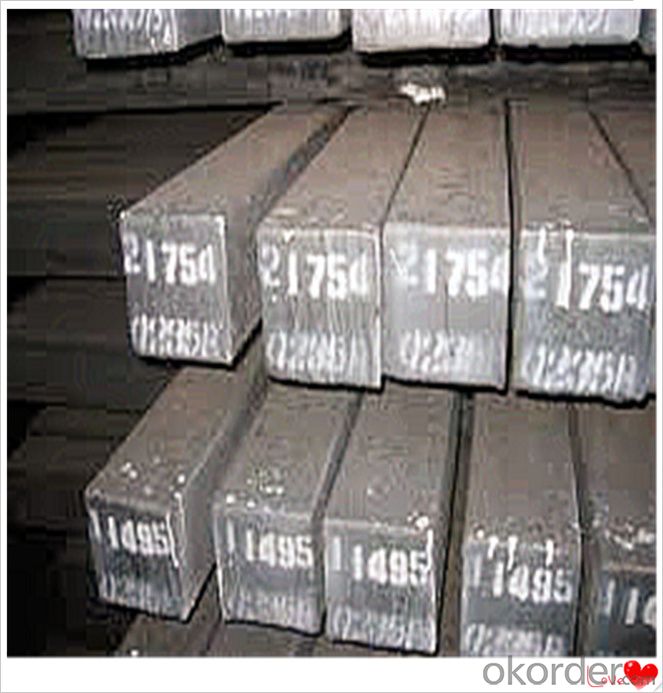
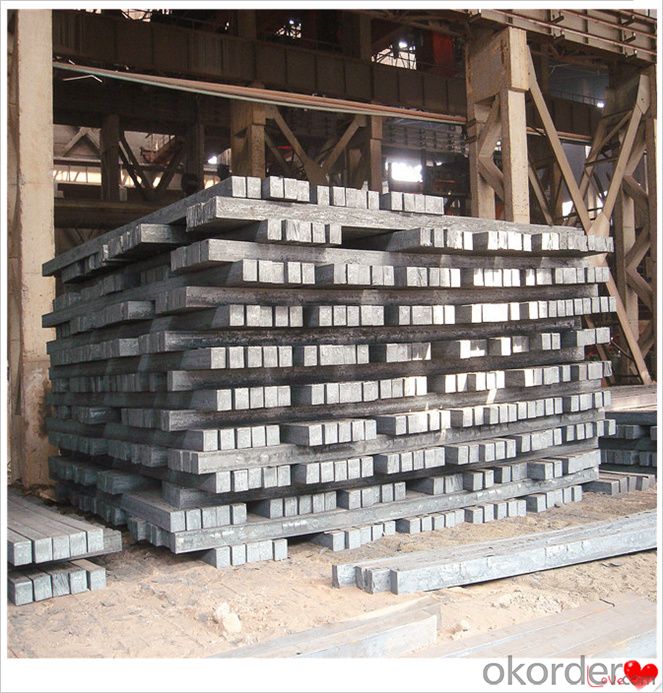
Technical Data
Size:100*100,120*120,150*150,130*130
Mn: 0.3%-0.6%
C: 1%
Cr:0.1%
Packaging
cargo ship or container
usually container price will add 15USD per ton
RFQ
We have organized several common questions for our clients,may help you sincerely:
1) How about your company?
A world class manufacturer & supplier of castings forging in carbon steel and alloy steel,is one of the large-scale professional investment casting production bases in China,consisting of both casting foundry forging and machining factory. Annually more than 8000 tons Precision casting and forging parts are exported to markets in Europe,America and Japan. OEM casting and forging service available according to customer’s requirements.
2) How to guarantee the quality of the products?
We have established the international advanced quality management system,every link from raw material to final product we have strict quality test;We resolutely put an end to unqualified products flowing into the market. At the same time, we will provide necessary follow-up service assurance.
3) How long can we receive the product after purchase?
In the purchase of product within three working days, We will arrange the factory delivery as soon as possible. The pecific time of receiving is related to the state and position of customers.Commonly 7 to 10 working days can be served.
4)Do you have your own QC department?
Yes, we have, our QC department will inspect the goods during the process of mass production and after completion of production.
hot sale!!! steel billets/ mild steel bar/ billet steel
(1): High quality steel with reasonable price.
(2): Wide excellent experiences with after-sale service.
(3): Every process will be checked by responsible QC which insures every product's quality.
(4): Professional packing teams which keep every packing safely.
(5): Trial order can be done in one week.
(6): Samples can be provided as your requirements.
If you are interested in our products, please don't hesitate to contact me.
Your any inquiry will be appreciated and we will offer you a rock-bottom price.
- Q:How are steel billets used in the manufacturing of rail tracks?
- Steel billets are used in the manufacturing of rail tracks as they serve as the raw material for the production of rails. These billets are heated and then rolled into the desired shape and size to create the rails. They provide the necessary strength, durability, and stability required to withstand the heavy loads and constant wear and tear experienced by rail tracks.
- Q:How do steel billets contribute to the manufacturing of machinery and equipment?
- The role of steel billets in the manufacturing of machinery and equipment is crucial. These semi-finished steel products serve as raw materials in various manufacturing processes. A primary contribution of steel billets to machinery and equipment manufacturing lies in the production of steel bars and rods. These shapes, essential components in the construction of machinery and equipment, are created by heating and then rolling or forging steel billets. Steel bars and rods provide strength, durability, and stability to machine structures. Additionally, steel billets are utilized in the production of other steel components such as gears, crankshafts, and axles. These components are vital for the proper functioning of machinery and equipment, requiring the high strength and toughness offered by steel billets. Manufacturers can rely on steel billets to ensure their machinery and equipment can withstand heavy loads, vibrations, and other demanding conditions. Furthermore, steel billets are commonly employed in the production of steel pipes and tubes, which find widespread use across various industries. These pipes and tubes are essential for transporting fluids, gases, and other materials within machinery and equipment. By utilizing steel billets, manufacturers can create pipes and tubes that not only possess strength and durability but also resist corrosion and wear. Moreover, steel billets contribute to machinery and equipment manufacturing by enabling the production of precision-engineered components. Manufacturers can machine, drill, and shape these billets to meet the specific requirements of different machinery and equipment. This flexibility allows manufacturers to produce intricate and complex components necessary for the efficient operation of machines. Overall, steel billets are integral to the machinery and equipment manufacturing process. They provide the necessary strength, durability, and versatility required to produce components capable of withstanding the demanding conditions of industrial applications. Without steel billets, the manufacturing industry would face difficulties in producing reliable, efficient, and long-lasting machinery and equipment.
- Q:How are steel billets used in the manufacturing of packaging equipment?
- Steel billets are used in the manufacturing of packaging equipment as they serve as the raw material for various components and parts. These billets are melted down and shaped into the desired form, such as plates, bars, or tubes, which are then further processed to create the structural framework, frames, or supports required for packaging machinery. The strength, durability, and malleability of steel make it an ideal choice for constructing robust and reliable packaging equipment, ensuring efficient and safe packaging operations.
- Q:How are steel billets used in the production of sheet metal?
- The production of sheet metal involves using steel billets in a process called rolling. Rolling entails passing steel billets through a series of rollers in order to decrease their thickness and create a flat sheet. To begin the process, the steel billets are heated to a specific temperature, which enhances their malleability. Once heated, the billets are fed into a rolling mill where they pass through a sequence of rollers that gradually reduce the thickness of the steel. As the billets are rolled, they undergo compression and elongation, resulting in a thinner and longer piece of steel. This procedure is repeated multiple times, with each pass further reducing the thickness of the steel sheet. After reaching the desired thickness, the sheet is cooled and cut into specific lengths. The end product is a flat sheet of sheet metal that can be further processed and utilized in various industries, including construction, automotive, and manufacturing. Steel billets play a vital role in the production of sheet metal as they serve as the raw material from which the sheets are formed. Their malleability and ability to withstand the rolling process make them an excellent choice for creating thin and long-lasting sheet metal.
- Q:What are the different methods of surface treatment for steel billets?
- Various methods exist for surface treatment of steel billets, each serving a distinct purpose and offering unique advantages. Among the most commonly employed techniques are: 1. Pickling: This involves immersing the steel billets in an acid solution to eliminate surface impurities like rust or scale. Pickling enhances surface finish and readies the steel for subsequent treatment or processing. 2. Shot blasting: In this method, high-speed steel shots or grits are used to bombard the steel billets, eliminating surface contaminants and creating a uniform texture. Shot blasting is frequently employed to remove rust, scale, or paint, and it can enhance the adhesion of subsequent coatings or paints. 3. Galvanizing: This treatment entails coating the steel billets with a layer of zinc to provide corrosion resistance. Galvanizing can be accomplished through hot-dip galvanizing, where the steel is immersed in a molten zinc bath, or through electroplating, where a thin layer of zinc is deposited on the surface using an electric current. 4. Painting or powder coating: Steel billets can be painted or coated with powder to deliver both aesthetic appeal and protection against corrosion. Paints or powder coatings create a barrier between the steel surface and the environment, preventing moisture and other corrosive agents from reaching the metal. 5. Passivation: This method requires treating the steel billets with a chemical solution, typically an acid, to remove any free iron or iron oxide from the surface. Passivation enhances the corrosion resistance of stainless steel and other alloys by creating a passive oxide layer that safeguards against further oxidation or rusting. 6. Nitriding: Nitriding is a surface hardening treatment where the steel billets are exposed to an atmosphere rich in nitrogen at elevated temperatures. This process diffuses nitrogen into the steel's surface, forming a hardened layer that enhances wear resistance and improves fatigue strength. 7. Chrome plating: Steel billets can be coated with a layer of chromium through electroplating, providing enhanced corrosion resistance and a glossy appearance. Chrome plating is frequently utilized in applications where aesthetics and durability are crucial, such as automotive parts or decorative fixtures. These examples represent only a fraction of the available surface treatment methods for steel billets. The selection of a particular technique depends on factors such as the desired outcome, the specific properties required, and the intended application of the steel billets.
- Q:What are the different surface defects in steel billets?
- Steel billets can have various types of surface defects, which can occur during manufacturing or due to handling and transportation. Some common defects include scale, cracks, lamination, pitting, slivers, rolled-in scale, and surface scratches. Scale forms as a rough, flaky coating during heating and rolling, affecting the billet's appearance. Cracks can be caused by improper cooling, excessive pressure, or stress during handling, compromising the billet's strength. Lamination defects occur when non-metallic layers weaken the billet. Pitting is the formation of small cavities due to corrosion or exposure to corrosive environments. Slivers are thin, protruding pieces caused by improper cutting or shearing. Rolled-in scale refers to embedded scale, requiring additional cleaning. Surface scratches are shallow marks that can affect aesthetics and may need further treatment. Proper identification, handling, and treatment of these defects are essential to ensure the quality of the steel billets. Regular inspection and appropriate techniques can minimize defects and enhance the billets' overall quality.
- Q:How are steel billets cut to size?
- Steel billets are typically cut to size using a variety of methods, depending on the specific requirements and the equipment available. One common method is by using saws or shears, which are capable of cutting through the steel with precision and accuracy. These tools can be operated manually or by using automated machinery. Another method is flame cutting, which involves using a high-temperature flame to melt and sever the steel. This technique is commonly used for thicker billets or when more intricate shapes are required. Similarly, plasma cutting is also a popular method for cutting steel billets. It utilizes a high-velocity jet of ionized gas, which is capable of melting and cutting through the steel. This method is often used when a high level of precision is required, as it offers smoother edges and a more precise cut. Additionally, water jet cutting is another option for cutting steel billets. This process involves using a high-pressure jet of water mixed with an abrasive material to cut through the steel. Water jet cutting is particularly suitable for materials that are sensitive to heat or for achieving intricate shapes. In some cases, steel billets may be cut using laser cutting technology. This method involves using a laser beam to heat and melt the steel, allowing for precise and efficient cutting. Laser cutting is often preferred for its ability to cut through various thicknesses and complex shapes. Ultimately, the choice of cutting method for steel billets depends on factors such as the desired precision, the thickness of the billet, the complexity of the shape, and the available equipment.
- Q:What are the properties of steel billets?
- Steel billets, typically rectangular in shape, serve as the starting point for the production of various steel products. They possess several distinct properties that make them essential and versatile in various industries. Firstly, steel billets have exceptional strength due to the presence of carbon and other alloying elements. This high strength enables them to withstand heavy loads and provide structural integrity in different applications. Secondly, steel billets are highly ductile, meaning they can be easily deformed without fracturing. This ductility allows for the shaping and forming of the billets into different products through processes like rolling, forging, and extrusion. Thirdly, steel billets have good thermal conductivity, allowing them to efficiently transfer heat. This property is particularly useful in applications involving heat treatment or heat dissipation, such as the manufacturing of automotive parts or machinery. Additionally, depending on their composition and surface treatment, steel billets can exhibit a certain level of corrosion resistance. However, it is important to protect them properly to prevent rusting, potentially requiring measures like coatings or galvanization. Furthermore, steel billets are known for their machinability, meaning they can be easily cut, drilled, or milled into desired shapes and sizes. This property facilitates the production of intricate parts and components. Lastly, steel billets are highly recyclable, contributing to the sustainability of steel production. This not only reduces waste and environmental impact but also supports the circular economy. In conclusion, the properties of steel billets make them essential and versatile materials in industries such as construction, automotive, machinery, and manufacturing.
- Q:Does anyone know how much it costs to refine a ton of steel? What are the expenses involved?
- Electricity, water, wages, raw materials, raw materials loss, charges, oxygen, according to their own circumstances, as well as freight and other expenses,
- Q:How do steel billets contribute to the construction industry?
- The construction industry relies heavily on steel billets for several key reasons. Firstly, they serve as the primary material for producing a range of steel products used in construction, including beams, columns, and reinforcement bars. These products are essential for providing structural support and integrity to buildings and infrastructure projects. Steel billets are also vital in the manufacturing of precast concrete elements, which are widely utilized in construction. By reinforcing pre-stressed concrete beams with steel billets, their strength and durability are significantly enhanced. This enables the construction of larger and more intricate structures like bridges, stadiums, and high-rise buildings. Additionally, steel billets play a crucial role in the fabrication of steel pipes and tubes, which are extensively employed in water supply systems, sewage lines, and gas pipelines. These pipes ensure the reliable and efficient transportation of fluids and gases, thereby facilitating the proper functioning of various infrastructure networks. Apart from their structural applications, steel billets also contribute to the construction industry through their recyclability. Steel is one of the most globally recycled materials, and steel billets can be melted and reused multiple times without any loss in quality. This not only reduces the demand for new steel production but also minimizes environmental impact and waste generation. In summary, steel billets are indispensable in the construction industry due to their versatility, strength, and recyclability. They serve as the foundation for producing various steel products and play a critical role in constructing durable and sustainable buildings and infrastructure projects.
1. Manufacturer Overview |
|
|---|---|
| Location | |
| Year Established | |
| Annual Output Value | |
| Main Markets | |
| Company Certifications | |
2. Manufacturer Certificates |
|
|---|---|
| a) Certification Name | |
| Range | |
| Reference | |
| Validity Period | |
3. Manufacturer Capability |
|
|---|---|
| a)Trade Capacity | |
| Nearest Port | |
| Export Percentage | |
| No.of Employees in Trade Department | |
| Language Spoken: | |
| b)Factory Information | |
| Factory Size: | |
| No. of Production Lines | |
| Contract Manufacturing | |
| Product Price Range | |
Send your message to us
Steel Billet steel Billet for Sale 3SP 5SP 20MnSi for Fireplace Steel
- Loading Port:
- Dalian
- Payment Terms:
- TT OR LC
- Min Order Qty:
- 100 m.t.
- Supply Capability:
- 50000 m.t./month
OKorder Service Pledge
OKorder Financial Service
Similar products
New products
Hot products
Hot Searches
Related keywords
